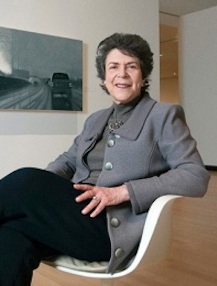By Kelly Coughlin
“We inherit students who have led monkish existences,” says Dr. Linda Pessar, a psychiatrist and the director of the Center for Medical Humanities at the University at Buffalo School of Medicine and Biomedical Sciences. While her statement describes only a fraction of incoming first-year medical students, with the standards for acceptance to medical schools constantly on the rise it is only logical that aspiring pre-medical students end up spending more and more time with their books. With this in mind, Pessar states that a goal of the Center of Medical Humanities is to “broaden [students’] exposure so they live in the world – for their own pleasure.”
But why should humanities be included in a medical education? A better question might be how it could possibly be excluded. Pessar stresses that “just as DNA has two strands – so it is with medicine,” meaning that the two branches of a medical education are in fact inseparable and of equal importance. “It’s an artificial distinction,” she says, while noting that the rapid growth in scientific knowledge that has occurred in recent years has pushed the balance towards the science rather than the art of medicine. An important goal of a medical education is and always will be “to know the core of medicine, to enable [students] to be a well trained general physician,” Pessar adds, but the scientific knowledge embodied in that education is not enough. “The ability to look carefully, to listen carefully, needs to be taught,” says Pessar, “you come with your own biases […] and somehow you must process that to biases we have toward certain illness.” Therein lies the art of medicine.
The question now becomes how to teach these skills to students. “Lectures aren’t effective,” notes Pessar, explaining that these skills are used in the moment, not after hours of research and careful consideration – students need “to act, not to think.” Each and every opportunity a medical student has to interact with a patient is a chance to hone their skills of perception, and so Pessar emphasizes that students are taught clinically, and that the work of the Center for Medical Humanities is more “a matter of proportion.”
Through the Center for Medical Humanities students have opportunities to broaden their educational experience by visiting museums, for example the Albright-Knox Art Gallery and the Burchfield Penney Art Center in Buffalo; hearing guest speakers, like bestselling author Dr. Abraham Verghese who visited the school in the spring of 2014; and taking courses, such as the Medical Humanities course taught by Dr. James Bono.
Beyond providing diversity, Pessar illustrates that these experiences provide an opportunity to learn without feeling pressure to be correct in their observations. Clinical experiences with patients, while invaluable, are as much tests as they are opportunities to learn. “When you’re talking about real patients, the medical student could be shamed,” she explains; the experiences offered by the Center for Medical Humanities contrastingly “make it safe to talk about it.” In this way, students are able to practice their skills of observation and reflection without fear of damaging their relationship with an actual patient. Pessar offers the example of third year psychiatry clerks attending a workshop at the Burchfield Penney and being asked to observe works of art as if they were those of a patient. In other experiences, students might learn what types of language to employ when questioning a patient to avoid making the patient feel judged.
“A liver walked into the doctor’s office,” says Pessar, immediately explaining that this situation is not likely to actually happen. A person with a diseased liver might walk into the doctor’s office, and Pessar’s goal is for students to see that “[their] ability to treat the liver depends on [their] ability to reach the patient.” This example typifies the relationship between the science and art of medicine – each is rendered essentially useless by a lack of knowledge of the other. To a purely scientific approach, “the person and their human needs appear to be impediment,” Pessar explains. But to her, students do not pursue careers in medicine if they are not interested in the well-being of others. With this in mind, the true purpose of a medical humanities curriculum is not to teach students to be empathetic; it is to remind them that they already are.
Kelly Coughlin is a senior at the University at Buffalo majoring in Biological Sciences and minoring in English. UB is home to the Omicron of New York Chapter of Phi Beta Kappa.




